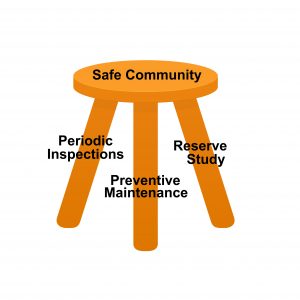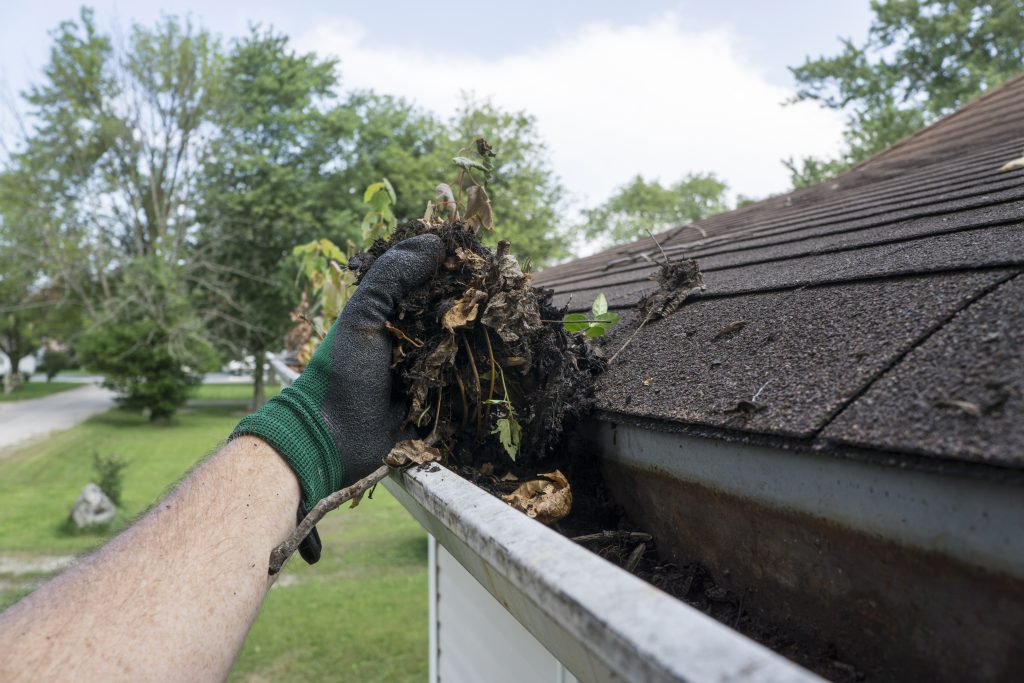As we ring in the new year, many of us are reflecting on last year’s challenges and the goals we have that will make 2022 a success. From eating better to meditating or simply spending more time with family, New Year’s resolutions are conscious decisions we make to improve our lives.
Just as we come up with tangible goals for ourselves, it is also important to make similar resolutions for our communities. Every community is a living, breathing entity, made up of residents, their individual needs, structures and site elements, and their own unique life cycles.
Whether you are a property manager, a board member, or homeowner, take some time to develop resolutions for the physical and financial wellbeing of your community and community association.
Develop a Proactive Plan
Between the tragic condo collapse in Surfside, Fla. and the continually devastating effects of COVID-19, if 2021 taught us one thing, it is that safety should never be taken for granted.
In relation to structural stability, it is important for community associations to develop a proactive plan for the maintenance and monitoring of their physical assets. Kipcon suggests a three-part approach, where each step works together to create a safe and stable community: Periodic Inspections, Preventive Maintenance, and Reserve Study.

Conduct Periodic Inspections
Periodic inspections are aimed at catching problems before they become significant. Having these inspections performed regularly is the best way to avoid costly, or even dangerous, deficiencies, especially related to the structural elements of your buildings.
We would recommend conducting periodic inspections at the following intervals:
- For new construction, the first inspection should be conducted no later than five years after the occupancy of the building.
- For existing buildings more than ten years old that have not yet been inspected, the first inspection should take place within two years.
- After the first inspection has taken place, inspections should be conducted a maximum of every ten years during the first twenty years after construction, and a maximum of every five years thereafter.
- At any time after an event that could affect the building structure (such as a significant weather event).
These periodic inspections are intended to find deficiencies rather than to investigate them. If a deficiency is found, a detailed assessment may be needed to better understand the issue so a plan for remediation or replacement can be put in place. If your association has never had a periodic inspection performed, make it a goal to have one done this year as a first step towards correcting any deficiencies.
The practice of correcting issues that have already progressed is known as corrective maintenance. Examples of corrective maintenance include filling a crack in the pavement, adding support to a structurally inadequate deck, or completely replacing a damaged roof.
Perform Preventive Maintenance
While corrective maintenance is extremely important, your primary goal should be to act before the problem becomes severe. The practice of taking steps to intercept deterioration is known as preventive maintenance.
Preventive maintenance will look different for each element of your community. When it comes to interior roadways and parking areas, it is important to get your asphalt surfaces seal coated to prevent water/ice from causing cracks. Make sure to have the roofing in your community cleaned regularly so that debris doesn’t build up, causing gutter and downspout blockages.

These are minor costs that will save your association money in the long run by preventing costly damage that could have been prevented! If you are looking for guidance on planning for maintenance in your community, consider the preparation of an Operating Manual.
Follow Your Reserve Study
Keep in mind that every component in your community has a finite useful life, with or without regular maintenance. Your reserve study is a great tool to keep track of the remaining useful lives of your common element components so that you are prepared to replace them when the time comes.
Following your reserve study is crucial for both the safety and financial security of your association, acting as a roadmap for best practices. If the financial suggestions in your reserve study are followed, your association should have the funds for every replacement that comes up.
If your association is short on funds, do not ignore upcoming replacements. Neglecting to replace a component at the end of its remaining useful life could cause safety hazards within your community and will likely end up costing even more down the road. In this case, you may want to consider a loan to fund the replacement.
However, you shouldn’t follow a reserve study unless it accurately reflects the current conditions of your common element components. The remaining useful life listed for each component is only an estimate, and can vary based on factors like weather conditions, materials used, etc. These factors can cause deterioration to speed up, potentially reducing the remaining useful life of a component significantly. Make sure to have your reserve study updated every two to five years to get the most out of it.
If your reserve study is telling you that one of your common element components is nearing the end of its remaining useful life, now is a good time to start planning for any upcoming capital replacement projects. While it’s cold and you’re cooped up inside, start discussing these upcoming replacements with your board and requesting proposals from qualified firms. That way, your project will be ready to start right as Spring rolls around!

